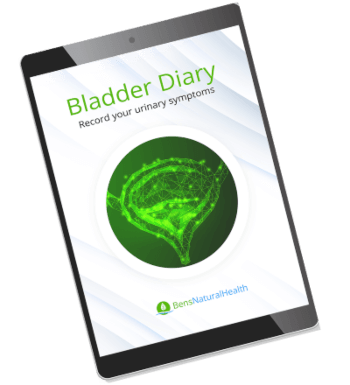Is it normal to have a lot of discharge?
If the stringy, thin, and clear fluid is bothering you, then you’ve come to the right place.
It’s completely normal and healthy for a mixture of fluids to come out of the penis and vagina before, during, and after sex.
But, how much discharge after sex is too much?
Should you be worried if the liquid white discharge changes color?
What does it mean if the body is producing a lot of vaginal or penile discharge?
Here, you can find the answers to all of your questions.
What Is Vaginal Discharge?
Vaginal discharge is fluid capable of lubricating the vagina and keeping it clean and infection-free. In this female fluid release, there are vaginal secretions, cell debris, and watery cervical mucus. The look and feel of the watering discharge will vary.
The color and texture can also change during the menstruation period. White discharge can come out before, during, or after an intimate encounter. If you are working out or doing some physical activities, the discharge tendency can increase.
The signs of normal discharge include:
- Whitish discharge
- Mild/no bad smell
- Clear and stretchy discharge
- Watery discharge
- Brown discharge (during ovulation)
- Change in volume (a little bit of discharge or a lot of discharge)
Why do I have so much discharge?
The cervix and vagina feature glands capable of producing mucus. This mucus is the discharge.
If you are wondering why you are having so much discharge, the extra fluid release or abnormal discharge could result from stress, birth control pills, or infections. Pregnant women, women with diabetes, and those taking antibiotics can have the same problem.
Is white discharge healthy?
There are different shades of white, like light yellow or cream. If the discharge doesn’t have a powerful odor, then this slightly colored discharge most likely means healthy lubrication.
What Is Penile Discharge?
Healthy and normal discharge from the penis is ejaculate and pre-ejaculate (1). Both can happen naturally from sexual activity and arousal.
Ejaculate is the liquid that the penis releases. It has semen (seminal fluid) and carries sperm capable of fertilizing a woman’s egg.
Pre-ejaculate is a tiny amount of semen. The body releases this liquid in the early stages of arousal to offer adequate lubrication.
The possibility of getting pregnant from pre-ejaculate is minimal. Experts estimate that 4 in 100 couples might get pregnant using the method.
So, even if the man pulls out on time, there is a 4% chance the pre-ejaculate discharge could cause a pregnancy. That’s because the pre-cum can have a few sperm cells. If you don’t want to get pregnant, consider using a condom.

Is It Normal to Have Discharge After Sex?
If sexual penetration doesn’t cause any pain, and there is milky or clear discharge coming out after sex, then this is a typical type of discharge.
The fluid is there to protect, clean, and lubricate the organs. This is especially true when it comes to a women’s discharge.
White discharge in women is easy to spot when a woman is sexually aroused because the fluid becomes thicker and comes out more. It means that the organs are working correctly, and there is nothing to worry about. If you think the smell is heavier than usual, talk to a gynecologist (for women) or urologist (for men).
Discharge Colors and What They Mean
Penile discharge is the fluid that comes out of the penis that isn’t semen or urine. It can have a white, yellow, or green color. Sometimes it can smell, be bloody, or contain pus and become cloudy.
Vaginal discharge has a range of colors. The types of discharge can sometimes indicate the health state of the muscular part of the female genital tract. If there is a clear watery discharge, then this is often considered healthy and normal.
But, white and clear vaginal discharge could also indicate hormonal imbalances, ovulation, pregnancy, or a yeast infection. When ovulation is just around the corner, the discharge can become slippery, stretchy, and wet. It sort of feels like raw egg whites.
If this type of texture and discharge consistency sounds familiar to you, you might be in your most fertile period.
However, if there is a yellow vaginal discharge, sort of greenish, frothy or chunky, then this could be a sexually transmitted infection. If it is cheesy, white, and thicker than usual, accompanied by itching and pain, it could mean a yeast infection.
Women get a red discharge when they are menstruating, have an infection, or a more serious ailment, like cervical cancer.
Pink discharge could mean implantation bleeding, cervical bleeding, or vaginal irritation. Whereas a gray, dark, or light gray color with a fishy smell could be a tell-tale sign of bacterial vaginosis.
What Causes Discharge After Sex?
Penile and vaginal watery discharge while having sex is completely normal. Sexual arousal is what’s causing lots of watery discharge. This discharge shouldn’t hurt. Here is a closer look at the classic white discharge reason and typical causes in women and men.
In Males
Men who worry about penile discharge often think they have a sexually transmitted disease (STD). But, STDs are not the only culprits that can lead to this type of fluid release.
Other causes include:
- Pre-ejaculate (pre-cum)
- Urinary tract infections (UTIs)
- Balanitis (inflammation of the head of the penis)
- Prostatitis
- Smegma (buildup of dead skin cells)
Can a man have a discharge and not have an STD?
Absolutely. Men can have penile discharge without having any sexually transmitted diseases. Precum is male discharge. If a man is sexually aroused or has intercourse, they can have discharge coming out of the penis.

In Females
“Why do I have a lot of discharge?”. This is a common question among women. They are often bothered by how much discharge they have.
Having white discharge of female organs is entirely normal and expected. The vagina must be moist so the sex won’t be painful.
When a woman has sex, the vagina should produce its own lubrication, capable of making penetration a smooth and comfortable process.
If there is a drastic change in the texture, color, and odor of the fluid, then it’s important to understand the possible vaginal discharge causes.
Some of these factors could upset the balance. These include:
- Douches
- Scented lotions or soaps
- Bubble baths with highly scented products
- Forgotten tampon or condom
- Yeast infection
- Vaginal irritation
- Vaginal atrophy
- Diabetes
- Sexually transmitted diseases (STD)
- Cervical cancer
- Birth control pills
- Bacterial infection
- Steroid or antibiotic use
Is discharge after using condoms normal?
Because these products are pre-lubricated, when the penis comes in contact with the vagina, the lubrication does lead to vaginal discharge.
The fluid may be colorless and odorless. Or it could be milky white.
If there is bubbly discharge or it smells bad, then this is not normal. It might be due to Trichomoniasis, which is a classic STD.
Get your FREE bladder diary
- Daily bladder diary
- Better understand your urinary symptoms
- Step-by-step guide
How Much Discharge Is Average?
In premenopausal women, it is normal to have roughly ½ to 1 teaspoon (2 to 5 mL) of clear, white, mucus-like discharge. The fluid can be mostly odorless. But, the texture, consistency, and amount can vary from person to person.
When a woman is near ovulation, menstruation, using birth control pills, or pregnant, then there can be a lot of clear discharge after sex. The excessive watery discharge is here to keep the urinary tract safe from infections and offer adequate lubrication to the vaginal tissues.
The average man secretes about a teaspoon or a couple of drops of pre-ejaculate. This is enough to help lubricate the penis and prepare it for intercourse.
At the same time, an average man can expel anywhere from a quarter teaspoon to one teaspoon of ejaculate. But, the amount will drastically reduce the more times a man ejaculates. And the discharge rate will vary from person to person. Men tend to expel the most semen while they are still in their early 30s.
When to See a Doctor
If you are getting more than usual discharge, it’s a good idea to consult a specialist. It is not normal if the heavy discharge is accompanied by:
- Bad smell
- Change in color (green, yellow, grey, red, pink)
- Change in consistency (foamy, cloudy, thick, or chunky)
- Blood-tinged discharge
- Pain when having sex or urinating
- Pelvic or abdominal pain
- Soreness or burning sensations
- Redness or swelling of the vulvar skin
- Itching of the labia, vaginal opening, or vulva
Men should see a healthcare professional if their discharge doesn’t come from ejaculate or precum. When there is no sexual arousal and there is some leaky discharge, this might be abnormal.
How To Stop Discharge
If the excessive discharge is getting on your nerves, it’s best to keep the genitals clean by using a mild and gentle soap.
Apply the soap only on the outside. There is no need to put it inside the vagina. Men should also avoid using products with harsh chemicals and heavy scents.
Products with alcohol can quickly dry out the skin of the penis. But to treat the abnormal vaginal discharge or penis discharge, doctors would need to find the underlying cause and use proper treatment.
Don’t forget to give your sex toys a thorough clean after use and frequently change the pads, tampons, or menstrual cups you use.
Keep an eye out for your watery yellow discharge, and talk to your doctor if you notice drastic changes in the texture, consistency, and amount of the leaking discharge.
Conclusion
Normal discharge, whether penile or vaginal, is usually clear and has a subtle scent. The scent isn’t bad or unpleasant.
When there are changes in the white discharge during sex, like a different texture, odor, or color, then this could be a sign of a problem.
What doctors consider abnormal is when the discharge is thicker and heavier than usual. It could be clumpy or pus-like. There may be a fishy or foul smell.
When this kind of change in discharge is followed by soreness, rash, itching, or burning sensations, that’s when you should contact a specialist.
Explore More








